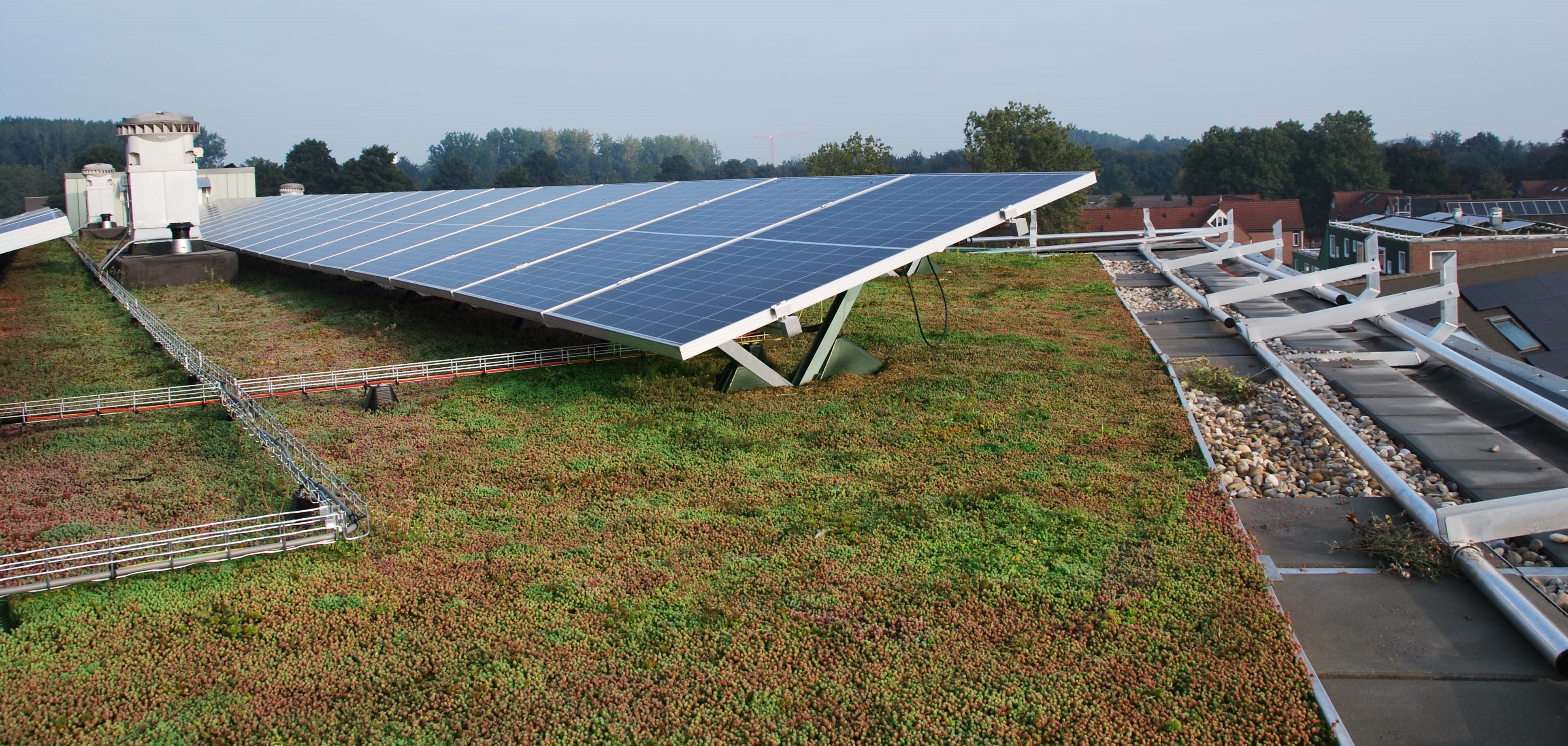What is a green roof?
A green roof is a - flat or pitched - roof covered with Sedum plants, herbs, wildflowers or grasses. Green roofs are sometimes also referred to as eco-roofs, vegetated roofs, living roofs or sod roofs. Furthermore, a distinction is made between extensive and intensive green roofs.
Various types of extensive green roofs
Green roofs are often planted with grass or Sedum, but green roofs can also have other types of plants, each with their own name, appearance, functionality and benefits.
 Sedum roof
Sedum roof
A Sedum roof is a green roof planted with a mix of Sedum plants. Sedum is a succulent plant, which holds a great deal of moisture, and this is why Sedum can survive in almost all climates and weather conditions. The main advantages of Sedum is that is requires hardly any maintenance and that lightweight solutions starting from 45 kg/m2 are possible. For a Sedum roof, Sempergreen supplies the Sedum-mix blanket, planted with a mixture of 6 to 8 different types of Sedum. This mix flowers from early spring to late autumn in various colours: white, yellow and pink.
Herb roof
A herb roof is a green roof planted with a mix of herbs. Not only do herbs have bright and lush flowers, they also give off a wonderful fragrance. What's more', some of the herbs are also edible. Sempergreen offers a specially developed Sedum-herb blanket for your green roof. This herb mix also includes a number of Sedum plants, so that in the winter the vegetation on your roof remains attractive and green.
Flower roof
A flower roof is a green roof that is planted with a mixture of wild flowers. These wild flowers bloom in magnificent colours from spring through to autumn. Depending on your preferences, Sempergreen offers a Wildflower vegetation blanket. Sedums give an extra touch to your green flower roof during the winter.
Biodiverse roof
Biodiversity is the degree of diversity of life forms in an ecosystem. Consider for example: animals, plants, insects, and organisms.Together the different species keep nature in balance. You will not find much biodiversity on a roof without vegetation. However, by adding a biodiverse vegetation to a roof, the disruption to nature is minimized. Bees and butterflies can shelter here and search for food. Even birds are welcome guests to a green roof. With an biodiverse roof – also known as a natural roof - you can contribute to the biodiversity of your living environment. Various Sempergreen vegetation blankets are suitable for a biodiverse roof. There is the Bees & Butterflies blanket, with specially selected host and nectar plants for bees and butterflies. Wildflower blankets, herb mats and mats that flower in one specific colour also fit in with this concept.
Green-blue roof
A green-blue roof is a green roof that can buffer large quantities of water and then discharge this gradually to the sewage system. This mechanism comes into operation particularly after peak rainfall. Water managers are increasingly seeking for sustainable water management solutions because the number of peaks in precipitation is rising. To absorb these peaks in rainfall, but also to cope with prolonged periods of drought, roofs that buffer water are of great importance. The Sempergreen Detention and Retention Roofs provide the solution by harvesting rainwater on the roof.
Energy roof - green roof with solar panels
Green roofs are an ideal foundation for solar panels. PV panels are most efficient at a lower operating temperature. A green roof lowers the temperature on a roof considerably, which means that solar panels perform better and thereby realise an higher return.

